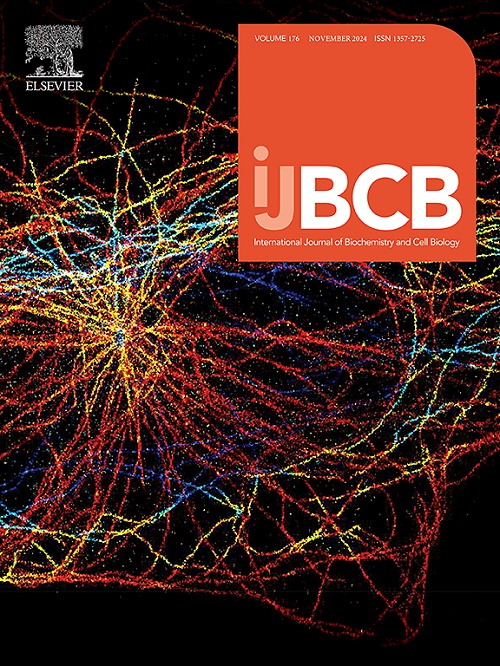The role of TRP channels in lung fibrosis: Mechanisms and therapeutic potential
IF 2.8
3区 生物学
Q2 BIOCHEMISTRY & MOLECULAR BIOLOGY
International Journal of Biochemistry & Cell Biology
Pub Date : 2024-12-11
DOI:10.1016/j.biocel.2024.106728
引用次数: 0
Abstract
Idiopathic pulmonary fibrosis (IPF) is a severe lung disease affecting around 5 million people globally, with a median survival of 3–4 years. Characterized by excessive scarring of lung tissue, IPF results from the accumulation of myofibroblasts that deposit extracellular matrix (ECM), causing fibrosis. Current treatments, pirfenidone and nintedanib, slow the disease but do not stop its progression. IPF pathogenesis involves repeated alveolar injury, leading to pro-fibrotic mediators like TGFβ1, which trigger fibroblast-to-myofibroblast transitions and ECM deposition.
Recent research suggests that transient receptor potential (TRP) channels, such as TRPV4, TRPC6, and TRPA1, play a key role in regulating calcium signalling and mechanical stress, crucial in myofibroblast activation.
Targeting TRP channels may disrupt fibrosis and offer new therapeutic strategies. Preclinical studies indicate that inhibiting TRP channels could reduce fibrosis, warranting further trials to explore their efficacy and safety in treating IPF and related fibrotic conditions
TRP通道在肺纤维化中的作用:机制和治疗潜力。
特发性肺纤维化(IPF)是一种严重的肺部疾病,影响全球约500万人,中位生存期为3-4年。IPF的特征是肺组织的过度瘢痕形成,由肌成纤维细胞积聚导致细胞外基质(ECM)沉积,导致纤维化。目前的治疗,吡非尼酮和尼达尼布,减缓疾病,但不能阻止其进展。IPF的发病机制涉及反复肺泡损伤,导致促纤维化介质如TGFβ1,触发成纤维细胞向肌成纤维细胞转变和ECM沉积。最近的研究表明,瞬时受体电位(TRP)通道,如TRPV4、TRPC6和TRPA1,在调节钙信号和机械应力中起关键作用,在肌成纤维细胞激活中起关键作用。靶向TRP通道可能会破坏纤维化并提供新的治疗策略。临床前研究表明,抑制TRP通道可以减少纤维化,需要进一步的试验来探索其治疗IPF和相关纤维化疾病的有效性和安全性。
本文章由计算机程序翻译,如有差异,请以英文原文为准。
求助全文
约1分钟内获得全文
求助全文
来源期刊
CiteScore
8.10
自引率
0.00%
发文量
124
审稿时长
19 days
期刊介绍:
IJBCB publishes original research articles, invited reviews and in-focus articles in all areas of cell and molecular biology and biomedical research.
Topics of interest include, but are not limited to:
-Mechanistic studies of cells, cell organelles, sub-cellular molecular pathways and metabolism
-Novel insights into disease pathogenesis
-Nanotechnology with implication to biological and medical processes
-Genomics and bioinformatics

 求助内容:
求助内容: 应助结果提醒方式:
应助结果提醒方式:


